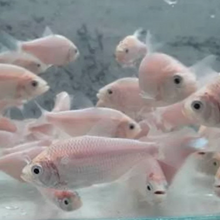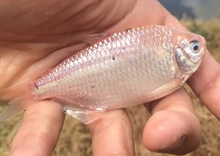Description
Astyanax bimaculatus is a characin native to South and Central America. It is also known as the Twospot Astyanax and is still comparatively uncommon among aquarists. The name Twospot Astyanax is derived from the two black spots found on this fish. One is located at the shoulder and one is found at the caudal peduncle.
Astyanax bimaculatus lives in South and Central America, from the Amazon basin to Panama. It lives in a rich assortment of different habitats, from clear rivers to drainage ditches. You can for instance find this fish in small streams and ponds. If you want to keep Astyanax bimaculatus you should keep it in an aquarium where the water temperature is subtropical, from 20 to 28°C. The water should ideally be acidic, but this species will tolerate a pH-value up to 7.5.
Wild Astyanax bimaculatus normally stay below 15 cm in length. Astyanax bimaculatus is silvery grey, but some specimens display a red shade on the fins. They feed on zooplankton, plant matter and detritus. They can also feed on the scales of fish so you should keep them under supervision in your aquarium.
In the wild, reproduction always occurs at the start of the rainy season and this is important to keep in mind when you try to breed Astyanax bimaculatus in captivity. Astyanax bimaculatus is a non-aggressive species that usually function very well in a community aquarium with other non-aggressive species.
Astyanax bimaculatus lives in South and Central America, from the Amazon basin to Panama. It lives in a rich assortment of different habitats, from clear rivers to drainage ditches. You can for instance find this fish in small streams and ponds. If you want to keep Astyanax bimaculatus you should keep it in an aquarium where the water temperature is subtropical, from 20 to 28°C. The water should ideally be acidic, but this species will tolerate a pH-value up to 7.5.
Wild Astyanax bimaculatus normally stay below 15 cm in length. Astyanax bimaculatus is silvery grey, but some specimens display a red shade on the fins. They feed on zooplankton, plant matter and detritus. They can also feed on the scales of fish so you should keep them under supervision in your aquarium.
In the wild, reproduction always occurs at the start of the rainy season and this is important to keep in mind when you try to breed Astyanax bimaculatus in captivity. Astyanax bimaculatus is a non-aggressive species that usually function very well in a community aquarium with other non-aggressive species.
















